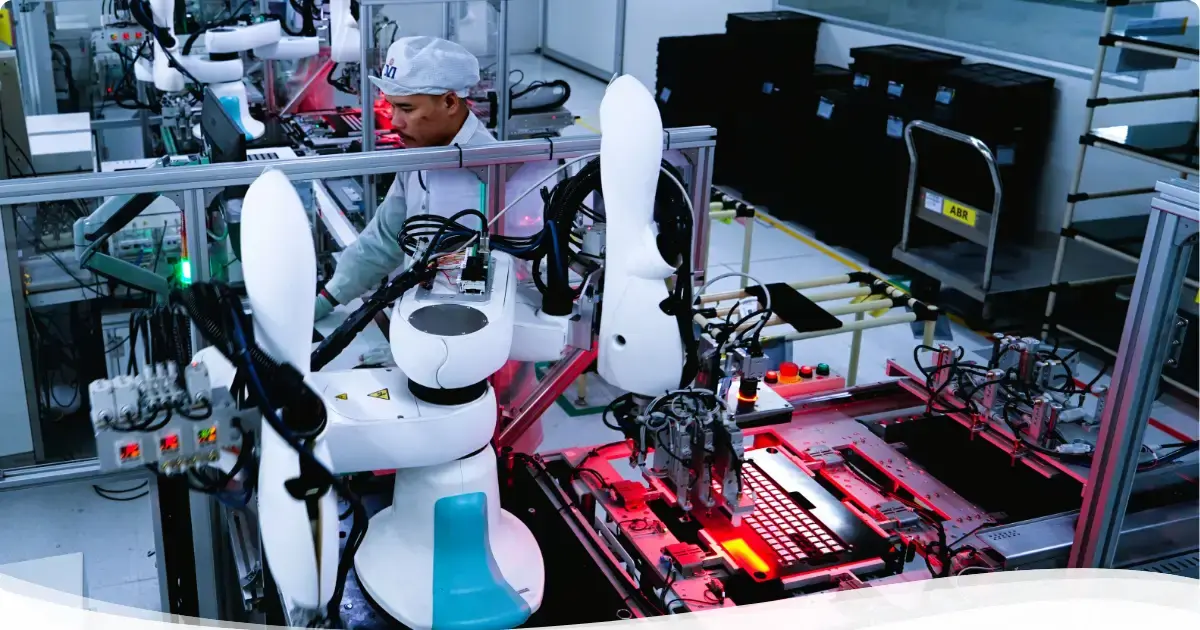
How to Improve Communication in the Supply Chain: Top Tips for OEMs
Effective communication is the backbone of a successful supply chain, particularly for Original Equipment Manufacturers. In a complex supply network where multiple stakeholders—from suppliers to logistics providers—must work harmoniously together, clear and consistent communication ensures activities are properly coordinated, risks are managed, and a smooth flow of goods and information is maintained. On the other hand, poor communication can have a profoundly negative impact on the supply chain, creating issues that extend beyond revenue loss.
Below, we explore how to improve communication in the supply chain through six key tips and considerations. OEMs can use insights and suggestions to evaluate and refine their supply chain communication, which can help them optimize their value chains overall.
The impact of poor communication in the supply chain
It's no secret that poor communication within the supply chain can lead to significant disruptions and inefficiencies, causing a negative ripple effect that affects both OEMs and their customers. Supply chain disruptions are estimated to cause financial losses of up to 62%, which can be difficult for profit margins to recover. But the problems don’t end with financial losses.
Poor supply chain communication can erode trust and damage supplier relationships, leading to longer-term challenges. At the same time, misaligned expectations and a lack of transparency result in delayed time-to-market, compromised product quality, and increased operational costs.
Ultimately, poor communication undermines the reliability and efficiency of the entire value chain, making it difficult for companies to meet their strategic goals and maintain a competitive edge in the market. As such, improving communication in the supply chain should be a priority.
Top tips for improving supply chain communication
Here are SVI’s top six tips on how to improve communication in supply chain management for OEMs.
Tip #1: Leverage technology
Thanks to advances in digital transformation, incorporating technology into supply chain operations can significantly streamline and enhance communication. Supply chain management software, for example, provides a centralized system where information like inventory levels, order status, and shipment tracking can be instantly accessed in real time. This ensures everyone is on the same page and increases supply chain visibility, which is key for preventing misunderstandings and supporting proactive decision-making.
Automation tools further enhance supply chain communication by reducing reliance on manual processes that are typically prone to errors and inconsistencies. Automating tasks such as order processing, invoicing, and inventory management minimizes human error and speeds up transactions, while automatic notifications and alerts ensure relevant parties are immediately notified of changes or issues without the need for human intervention.
Tip #2: Review and refine communication channels for clarity
Standardized communication channels and processes are essential for clear and consistent communication across the supply chain. However, even with established communication channels, OEMs must update these regularly to improve clarity and efficiency. By refining standard operating procedures, OEMs can better share information, delegate tasks, and ensure communication tools are used effectively. This eliminates ambiguities, reduces errors, and clarifies roles and responsibilities. A well-structured and regularly updated communication framework fosters more organized interactions, which is critical for effectively managing complex supply chain operations.
Regular updates are another key component of effective communication channels. Scheduling consistent meetings and progress updates helps ensure all stakeholders are aligned and aware of the latest developments. These updates provide the platform to promptly address issues or concerns, discuss upcoming tasks, and make necessary plan adjustments. Maintaining a steady cadence of updates allows companies to proactively manage their supply chain activities, ensuring they can respond swiftly to any changes or challenges that arise, ultimately leading to a more agile and resilient supply chain.
Tip #3: Use vertically integrated suppliers
A disparate supply chain involving numerous suppliers and stakeholders often leads to communication breakdowns, delays, and quality issues simply because of its fragmented nature. A supply chain like this is complex and resource-intensive to manage, and not only when it comes to communication. Partnering with a vertically integrated supplier can significantly streamline supply chain communication and reduce complexities overall.
In a vertical integration model, multiple stages of production are consolidated under a single supplier, reducing the number of third-party intermediaries and creating better supply chain coordination and more direct communication. With one supplier managing the bulk of the value chain, OEMs receive immediate updates from a single point of contact. This approach also reduces lead times and costs while enhancing product quality and reliability.
Tip #4: Build partnerships with suppliers
Building strong supplier relationships is crucial for maintaining a resilient and efficient supply chain. Treating suppliers as partners rather than mere vendors transforms the dynamic into a collaborative effort where both parties work towards shared goals. This partnership approach fosters mutual trust and commitment, encouraging suppliers to invest in quality and innovation, knowing their efforts are valued. By viewing suppliers as strategic partners, OEMs can benefit from more direct and efficient lines of communication.
Moreover, regular and transparent feedback mechanisms allow for continuous improvement and help to identify potential issues before they escalate. This ongoing dialogue ensures that OEMs and suppliers remain accountable and focused on their mutual objectives. By building strategic partnerships with the right suppliers, OEMs can strengthen their supplier relationships overall, leading to a more collaborative, efficient, and responsive supply chain.
Tip #5: Invest in training and development
Providing employees with training on effective communication techniques can significantly improve the clarity and efficiency of their interactions with suppliers across the supply chain. Training programs should cover key areas such as active listening, clear and concise messaging, and the use of appropriate communication tools. By equipping employees with these skills, OEMs can ensure information is accurately conveyed and understood, reducing the risk of misunderstandings and errors.
With diverse teams often spanning multiple countries and cultures, effective communication in global supply chains also requires an understanding and respect for cultural differences. Providing cultural awareness training can help teams appreciate various communication styles, time management practices, and decision-making processes unique to different regions. This cultural sensitivity fosters better collaboration, minimizing potential risks that could arise from cultural misunderstandings. Fostering cultural awareness in communications can create a more inclusive and harmonious working environment, leading to more seamless communication across the global supply chain.
Tip #6: Adopt transparent practices
Optimal supply chain visibility depends on transparent communication between supply chain partners, where all stakeholders have access to the information they need to make informed decisions. However, in a recent GEODIS Supply Chain Worldwide survey conducted with 623 companies, only 6% claimed to have achieved full supply chain visibility, suggesting a widespread need for transparent practices. Communication transparency involves openly sharing data related to inventory levels, production schedules, and potential disruptions. Suppliers, OEMs and partners can anticipate supply changes and adjust plans by providing clear and timely updates.
Transparency also plays a crucial role in trust-building. Open and honest communication about challenges, risks, and expectations helps create a foundation of trust between OEMs and their suppliers, encouraging all parties to be more forthcoming about challenges and to work collaboratively to find solutions. Transparent practices like these foster a culture of mutual respect and cooperation, essential for long-term partnerships and navigating global supply chain complexities. By committing to transparency, OEMs can build stronger, reliable supplier relationships, improving supply chain performance.
The role of leadership in communication
Effective supply chain communication is also heavily reliant on the accessibility and engagement of supplier leadership. When supplier leaders are approachable and communicative, they foster a culture of transparency and collaboration within their own business and with their OEM partners.
Accessible leadership ensures any concerns or issues an OEM raises can be promptly addressed at a high level, facilitating quicker resolutions and minimizing disruptions. This direct line of communication also allows for more agile decision-making, as supplier leaders can provide immediate input and make swift adjustments to align with the OEM's needs.
Moreover, when supplier executives are involved in strategic discussions and are proactive in their communication, it builds confidence and trust with OEMs and enables them to anticipate potential challenges and implement solutions before the supply chain is impacted. With involved and communicative supplier leadership, OEMs can benefit from a more responsive and adaptive supply chain.
Conclusion
Communication is the cornerstone of a reliable and effective supply chain, and fostering good communication across the value chain can do more than just save OEMs money. Transparent, clear and consistent communication, supported by technology, can streamline production processes, reduce lead times and enhance product quality.
What's more, with the help of a vertically integrated manufacturing partner with accessible and communicative leadership, like SVI, OEMs can foster long-term, mutually beneficial supplier relationships and achieve greater confidence in their supply chain.
Learn more about SVI’s vertical business or supply chain management services, or contact us for more information.
 Supanee Nookaew
Supanee Nookaew

.png?width=318&height=201&name=mm-ebook%20(1).png)





